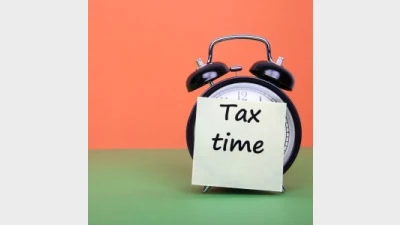Revisiting cash out re-contribution strategies



- The cash out re-contribution strategy;
- Potential benefits; and
- Important points to consider before recommending the strategy.
- Changing the work test requirement and extending the non-concessional contribution bring-forward rules effective 1 July 2022.
- Increase in the tax-free component of superannuation interest;
- Reduction in tax paid by non-dependent beneficiaries in the event of death;
- If aged between preservation age and age 60, increase in tax-free component resulting in paying less tax on pension payments made prior to age 60;
- Depending on income and other eligibility requirements, once the contribution is made the individual may qualify for Government co-contribution of up to $500;
- Equalising superannuation balances for couples where the amount is withdrawn from one person’s superannuation and contributed into the other person’s superannuation account. By doing so, each person may be able to better manage their individual transfer balance caps or total superannuation balances. This may provide an opportunity to transfer more amount to pension or to make additional superannuation contributions; and
- Similarly, where one spouse is younger than the other, by withdrawing an amount from the older person’s superannuation and contributing to the younger person’s superannuation account, the couple may be able to access additional social security benefits while the younger person is below age pension age.
- Ensure one of the specified conditions of release is met;
- If the client made personal contributions to super for which they wish to claim a tax deduction, the Notice of Intent form must be submitted and acknowledged by the superannuation trustee before the lump sum is withdrawn. Otherwise, the client may not be able to claim the full deduction;
- If making a full withdrawal, be aware of any existing insurances held within superannuation and potential loss of the ‘retirement bonus’;
- The tax components cannot be separated. The amount withdrawn will be paid in proportion of taxable and tax-free components;
- If below age 60, any amount withdrawn from the taxable component is included in the individual’s assessable income. For individuals aged between the preservation age and age 60, the low rate cap will be applied. No tax will be deducted from the amount being withdrawn from the taxable component up to the cap. Amounts withdrawn above the low rate cap are taxed at 17% including Medicare levy;
- For individuals between the preservation age and age 60, although no tax will be paid on the amount withdrawn within the low rate cap, the withdrawal may impact other payments and benefits including child support liabilities, certain Government benefits, and concessions;
- For SMSF members a journal entry is not sufficient. The amount must be withdrawn from the SMSF and paid to the member’s personal bank account;
- If multiple superannuation interests exist, it may be more tax effective to withdraw the amount from the interest with the higher taxable component;
- Transaction costs such as buy/sell spreads may apply; and
- Time out of the market during the implementation process.
- For individuals turning age 75, amounts contributed must be received no later than 28 days after the end of the month in which they turned 75;
- The amount withdrawn can be contributed to the same superannuation account or another superannuation account for the same individual;
- The amount withdrawn can also be contributed to the spouse’s superannuation instead.
- Amount contributed will be preserved until one of the conditions of release is met;
- If amounts contributed are retained in the accumulation account, future earnings will be added to the taxable component;
- Before fully utilising the bring forward amount, consider future contributions. If the bring-forward is fully used in a single year, the individual will not be able to make additional non-concessional contributions in year two or three;
- If the bring-forward rule was triggered in previous years but not fully utilised, the non-concessional cap available to the individual may be less than the full cap of $330,000;
- Amount contributed in excess of the available cap will be assessed as an excess contribution;
- Check the Total Superannuation Balance (TSB) on prior 30 June. If the TSB on prior 30 June exceeded $1.7 million, the individual is not eligible to make non-concessional contributions in that income year. As such, there will be no benefit in cashing out the amount from super; and
- To be able to utilise the bring-forward cap in full (that being $330,000), the TSB on prior 30 June must be below $1.48 million. When the TSB on prior 30 June was between $1.48 and $1.7 million, the available cap will reduce as follows:
Source: Lifespan Financial Planning
CPD QUIZ ACCREDITED
This activity has been accredited as continuing professional development by the Financial Planning Association of Australia but does not constitute FPA’s endorsement of the activity.
Recommended for you
When entering paid employment, it’s not long before we are told that we’ll need to lodge a tax return but there are times when a person will be excepted.
Anna Mirzoyan examines how grandfathering affects income support payments and how factors such as paying for aged care can impact them.
There are specific requirements that only apply to trustees of self-managed superannuation funds, writes Tim Howard, including the allocation in their investment strategy.
Investments bonds offer a number of flexible, tax-advantaged benefits, writes Emma Sakellaris, but these are often overlooked as old fashioned when it comes to portfolio allocations.










